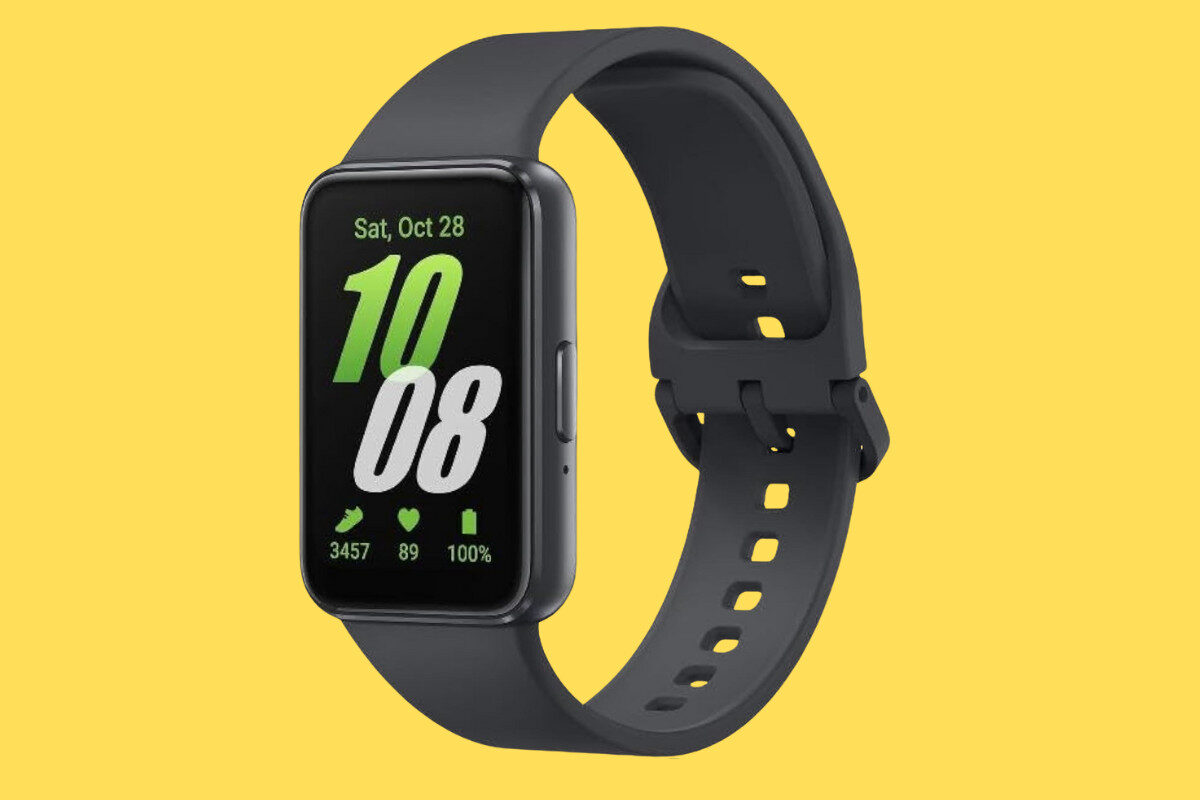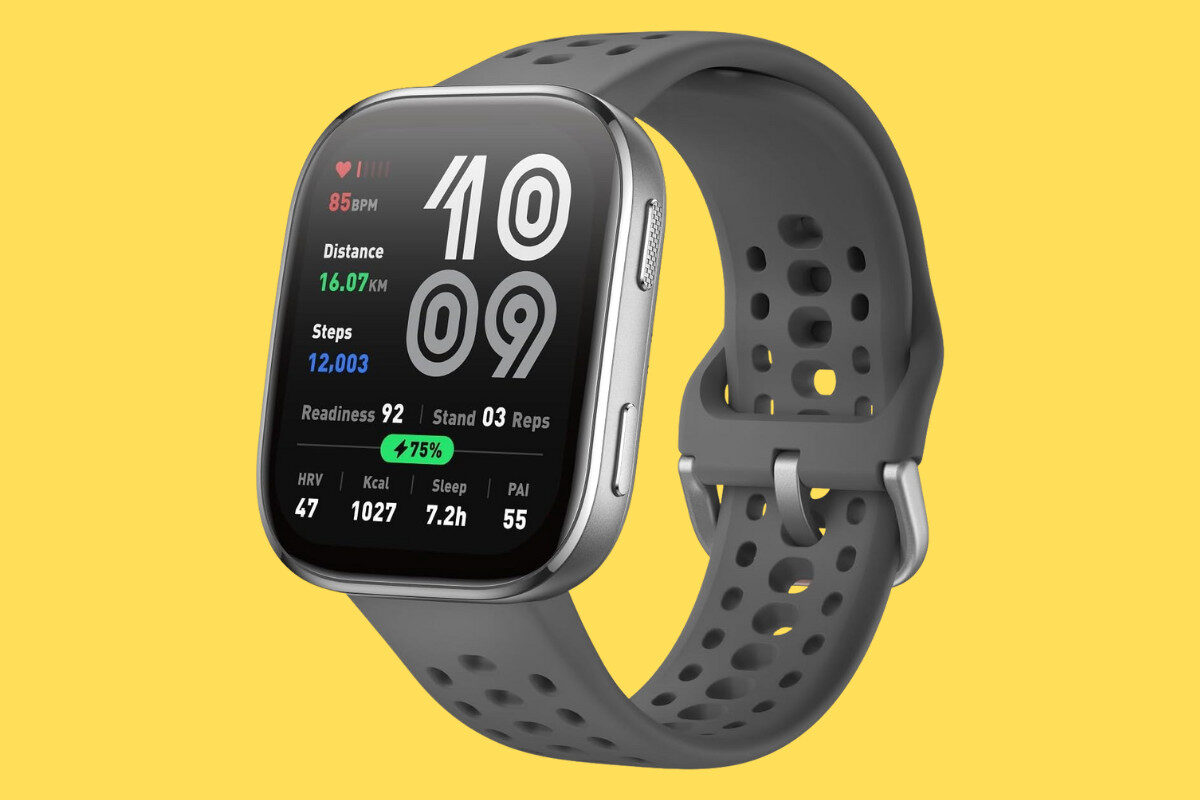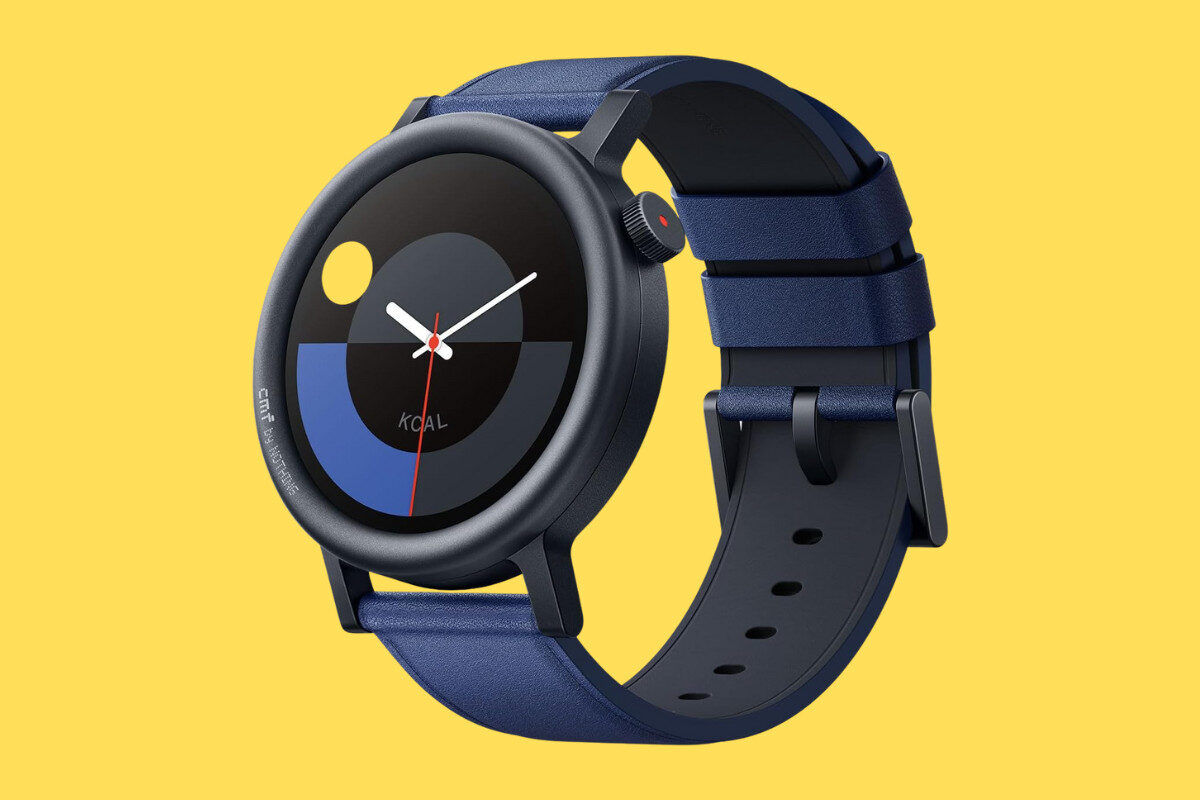Key Takeaways
- Large AMOLED screen: Bright, sharp, and easy to read.
- Fitness-first: 100+ workouts, heart rate, SpO₂, stress, and sleep tracking.
- Good value: Priced at just $59.
- Battery life: 5–8 days in typical use.
- Limitations: No built-in GPS, no NFC, and Android-only support.
👉 Bottom line: If you’re an Android user who wants a polished, affordable fitness tracker, the Galaxy Fit 3 is one of the smartest buys right now.
The Samsung Galaxy Fit 3 is Samsung’s latest budget-friendly fitness tracker, and it might be the best option for Android users who want health tracking and a sharp display without paying Galaxy Watch money.
I’ve been wearing it daily for the past several weeks and while it doesn’t do everything, it gets the fundamentals right and at this price point that’s all you really need.
If all you need is notifications, step counting, and the ability to track your runs, this is all the watch you’re ever going to need. Why spend $300+ when you can get everything you need for less than $50?
Here’s my hot-take, warts and all, on the Galaxy Fit 3 based on several weeks of living with it on my wrist…
Design & Display

The first thing you notice is the 1.6-inch AMOLED screen. It’s bright, sharp, and far bigger than what most bands in this price range offer.
Notifications, workout stats, and even music controls are easy to see at a glance, and the slim bezels make it look more premium than the price suggests.
Touch response is quick, and swiping through menus feels smooth. At just under $60, this is one of the best displays you’ll get on a fitness tracker.
Comfort & Durability
The Galaxy Fit 3 is slim, lightweight, and comfortable enough to wear 24/7. It’s water-resistant, so you can swim or shower with it on, and the strap is breathable enough for workouts. After a week of wearing it day and night, it never felt intrusive.
Fitness & Health Tracking
For a budget tracker, the Fit 3 packs in a lot:
- 100+ workout modes with auto-detection for common activities like running, walking, and cycling.
- Heart rate, SpO₂, stress, and sleep tracking — all feeding into the Samsung Health app, which gives detailed trend reports.
- Women’s health tracking built in.
- Barometer for elevation tracking, which is rare in this price range and useful for hiking.
In my runs and workouts, auto-detection kicked in consistently, and the data felt accurate. The sleep insights are especially detailed, breaking down cycles and trends in a way that matches what you’d get from more expensive Samsung wearables.
The trade-off? No built-in GPS. If you want location tracking, you’ll need to take your phone along, which might be a deal-breaker for runners and cyclists who prefer to go phone-free.
Smart Features

For a sub-$60 tracker, the smart features are solid:
- Notifications come through reliably.
- You can answer calls from the band (though your phone needs to be nearby).
- Music controls work smoothly, letting you skip tracks or adjust volume without pulling out your phone.
There’s no NFC, so forget about tap-to-pay, and many deeper insights still live inside the Samsung Health app rather than on the tracker itself.
Battery Life
Samsung claims up to 13 days of battery life, but in real-world use, with notifications, continuous heart rate, and auto workout detection, I averaged 5–8 days per charge. But I run most days and that will zap the battery; if you’re a lighter runner, 2 to 3 times a week, you’ll get way more mileage.
Either way, with heavy use (in my case) that’s still almost an entire week of use without a single top-up.
How It Compares
- Vs Fitbit Inspire 3: The Fit 3 wins with a bigger display, better workout tracking, and no premium subscription “paywalls.” Fitbit’s Inspire 3 is slimmer and works with iOS, but Android users are better off with the Fit 3.
- Vs Xiaomi Band 9 / Amazfit Bip: Samsung’s display and notification handling are stronger, but Amazfit models edge ahead with built-in GPS.
Verdict: Who Is This For?

The Galaxy Fit 3 is for you if you want:
- A big, bright display for easy readability.
- Reliable fitness and health tracking synced to Samsung Health.
- Affordable pricing at around $59.
- A slim, lightweight band with 5–8 days of real-world battery life.
It’s not for you if you need:
- Built-in GPS for phone-free workouts.
- Contactless payments (no NFC here).
- iOS compatibility (it’s Android only).
Final Word
At around $59, the Samsung Galaxy Fit 3 is a standout in the budget fitness tracker market. It doesn’t try to be a full smartwatch, but for Android users who want reliable health tracking, long battery life, and a display that punches above its price, it’s one of the best options in 2025.



